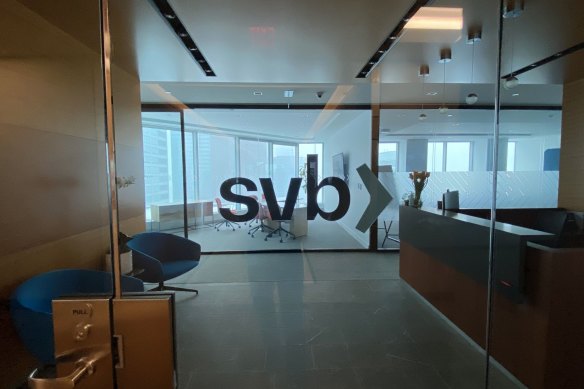From crisis to calm in four days: why Silicon Valley Bank didn’t turn into Armageddon
How fitting that in the fast-moving world of technology, the financial crisis around the collapse of its biggest financier, Silicon Valley Bank, arose and was averted in only four days. Forty-four hours after a run on the bank, it was in liquidation. Warp speed.
By Sunday evening in the US, just as Australians were starting their work week and bracing for a fallout on the local stock market, a trio of US authorities stepped in to cauterise the collateral damage that threatened to bleed to other banks and annihilate $US175 billion ($263 billion) deposited into Silicon Valley Bank by a slew of small technology companies and start-ups.

There was no slow-motion build-up to the bank’s implosion, there was no widespread public worry about the state of its balance sheet.
It was basking in the freshly minted accolades from Forbes naming it one of America’s best banks. And there wasn’t a peep from ratings agencies sounding alarm bells.
It wasn’t until mid last week when SVB announced an equity raising to bolster its coffers that a couple of big technology investors told their companies to pull their deposits. That news spread like wildfire. Within days liquidators were called in.
Regulators understood well that this was a situation that required nipping in the bud. Over the weekend, hysteria mounted and doomsayers jumped on podiums to herald a financial Armageddon.
SVB was basking in the freshly minted accolades from Forbes naming it one of America’s best banks.
Attempts over the weekend to find a larger financially stable bank to buy and thus bail out SVB by the time US markets start trading on Monday were not successful. Although the plan shouldn’t be ruled out as the situation progresses.
The threat of carnage on equity markets was simultaneously averted with the intervention and tech-heavy Nasdaq futures index reversed from losses to gains on Monday morning Australia time and the S&P 500 futures turned positive.
This is not to suggest that even after deposits are safe, there won’t be fallout from the bank’s implosion. There are uncertain times ahead for those with loans from, and transactions accounts with, Silicon Valley Bank.
It almost exclusively banked small-tech companies, using its expertise to assess loans that other US banks would have turned away.
As such it was an important part of the innovation ecosystem.
But the intervention by the Federal Reserve, Treasury and the Federal Deposit Insurance Corporation wasn’t just about looking after these depositors, it was designed to avoid contagion – the risk that depositors with other small banks would start to withdraw funds.
While it is generally understood that dealing with any start-up (including those in the tech space) comes with a bigger dollop of risk, the demise of Silicon Valley Bank is not the result of dodgy lending. Anything but.
This bank’s failure can be correctly traced back to the bank’s poor management on the one hand and rising interest rates on the other.
Although the failure of SVB has been likened to the Global Financial Crisis, this is a false equivalence. The stricter capital ratios and prudential controls over America’s large banks that were put in place after the GFC have fortified the financial system.
Silicon Valley Bank had a peculiar set of issues, which created a perfect storm.
Its deposit base was disproportionately large – and these funds were over-invested in bonds and mortgage-backed securities, both of which had radically devalued over the past year as interest rates rose.
The rapid rise in interest rates also limited the tech company’s ability to find equity to fund their expansion and, in turn, they had been eating into their deposits at a faster rate.
The deposit base was also particularly concentrated, thus a smaller number of withdrawals could have an outsized impact on the bank’s funds.
The bank’s misfortune sits clearly in the hands of its management, as does what appears to be inadequate hedging to mitigate the risk of its over-exposure to bonds and mortgage-backed securities.
The larger threats have been removed, but there will be some more pain for small tech companies that depended heavily on SVB.
The Business Briefing newsletter delivers major stories, exclusive coverage and expert opinion. Sign up to get it every weekday morning.
Most Viewed in Business
Source: Thanks smh.com